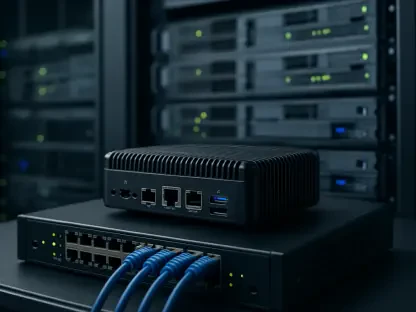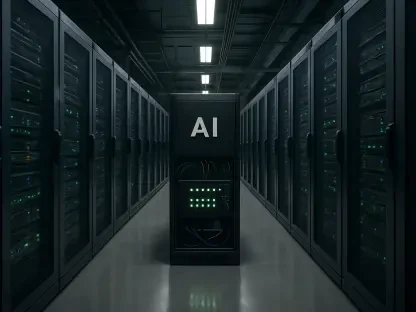In the ever-evolving landscape of cloud security and artificial intelligence (AI) integration, the introduction of the Model Context Protocol (MCP) Server for Wiz represents a significant leap forward. This advanced protocol is specifically designed to streamline the connection between applications and AI models, considerably reducing the effort required for integration and ultimately enhancing the overall security posture of cloud environments. Supported by major players like OpenAI, Microsoft, and Google, MCP builds a unified framework that empowers security operations through intelligent, context-aware decision-making.
1. Surface and Fix Vulnerabilities Instantly—Right from Your IDE
The Wiz MCP Server is revolutionizing the way developers identify and address security vulnerabilities directly within their Integrated Development Environment (IDE). This streamlined approach begins by listing all critical security issues present in production environments, providing a comprehensive overview of potential threats. Detailed examination of each specific issue helps developers understand the scope and implications, ensuring no critical detail is overlooked.
Once a problem is identified, the next step involves diagnosing the root cause of the vulnerability. By pinpointing the underlying code issues, developers can understand exactly where and why the problem occurred. This crucial diagnostic step is followed by navigating directly to the affected file within the IDE, such as Cursor. This seamless transition enhances efficiency by eliminating the need to switch between multiple tools or interfaces. Following this, developers can design tailored solutions based on recommendations provided by Wiz, ensuring the fix is both effective and contextually relevant.
Assessing the potential effects of the proposed changes is a critical step, allowing developers to evaluate any potential disruptions or side effects before implementation. Once the fix has been reviewed and approved, it is applied directly to the compromised code. The remediation process culminates with the deployment of the fix via a GitHub pull request, ensuring all changes are documented and traceable. Finally, revisiting Wiz to verify that the issue has been resolved closes the loop, providing assurance that the vulnerability has been effectively mitigated.
2. Minimize Your Attack Surface—From Terminal to Response
Mitigating an organization’s attack surface is integral to maintaining robust cloud security, and Wiz MCP Server plays a pivotal role in this process. Discovery is the first step, identifying all active threats within the environment, offering a real-time snapshot of ongoing malicious activities. The next move is to analyze the resources impacted by these threats, such as malicious code execution or malware infections, providing a detailed view of compromised components.
Investigating the root cause helps in understanding how the threat infiltrated the system, allowing security teams to identify any potential exposure of affected resources. This crucial step informs the next action: fixing the root cause. By restricting public access to open ports on these resources using tools like AWS CLI, security teams can effectively contain the threat and prevent further exploitation.
Assessing the blast radius is vital in understanding the broader implications of the compromise. By reviewing and analyzing the malicious activity on the impacted resources, security teams can gauge how widespread the breach has been and identify any additional systems that may be compromised. Planning remediation strategies using AI-generated suggestions ensures a well-informed and effective response, minimizing future risks and enhancing the overall security posture of the cloud environment.
3. Query Your Cloud Posture—And Get Actionable Insights
The comprehensive understanding of cloud security posture facilitated by Wiz MCP Server offers an advanced solution for discovering, analyzing, and addressing potential risks. Inventory discovery is the first step, allowing users to search for specific instances, such as MongoDB, across the entire cloud environment. This broad visibility ensures that nothing crucial is missed, enabling thorough and accurate assessments.
Analyzing the exposure status of these instances is the next logical step, checking for accessibility from the internet and identifying any vulnerabilities. Potential exposure presents significant risks, so it is imperative to verify whether any instances contain additional risks, such as sensitive data. This assessment of toxic risk combinations helps in prioritizing remediation efforts based on the severity and sensitivity of the data involved.
Once potential risks are identified and analyzed, security teams can develop actionable measures to mitigate these issues. The context-aware responses provided by Wiz MCP Server guide these efforts, ensuring that remediation is both effective and aligned with the specific security needs of the cloud environment. This level of insight and guidance is crucial in maintaining a strong security posture, preventing breaches, and protecting sensitive information from exposure.
Embracing the Future of Cloud Security and AI Integration
In the rapidly changing domain of cloud security and AI integration, the launch of the Model Context Protocol (MCP) Server for Wiz marks a noteworthy advancement. This sophisticated protocol is tailored to simplify the linkage between applications and AI models, significantly cutting down the effort required for integration while greatly enhancing the security landscape of cloud environments. Endorsed by key industry leaders such as OpenAI, Microsoft, and Google, MCP establishes a unified framework. This framework empowers security operations via intelligent, context-aware decision-making capabilities. With MCP, organizations can expect a boost in their security infrastructure’s effectiveness, making it an essential tool for modern cloud security practices. In an era where the synergy between AI and cloud services is paramount, MCP stands out as a pivotal technology that promises to redefine how security protocols are managed and executed, ensuring a more secure and resilient cloud environment.









